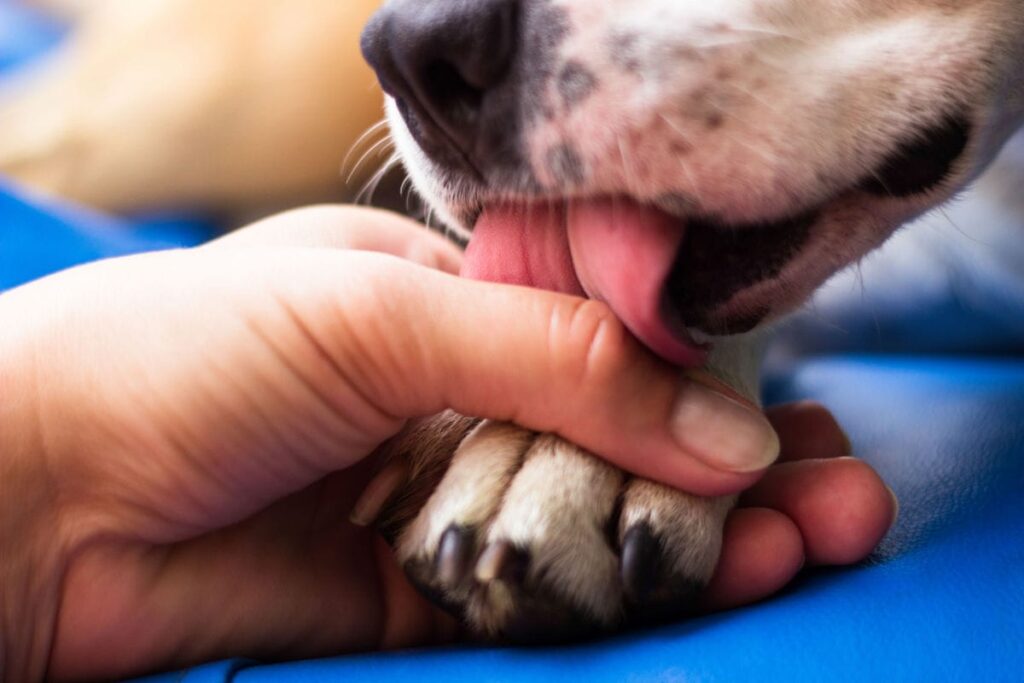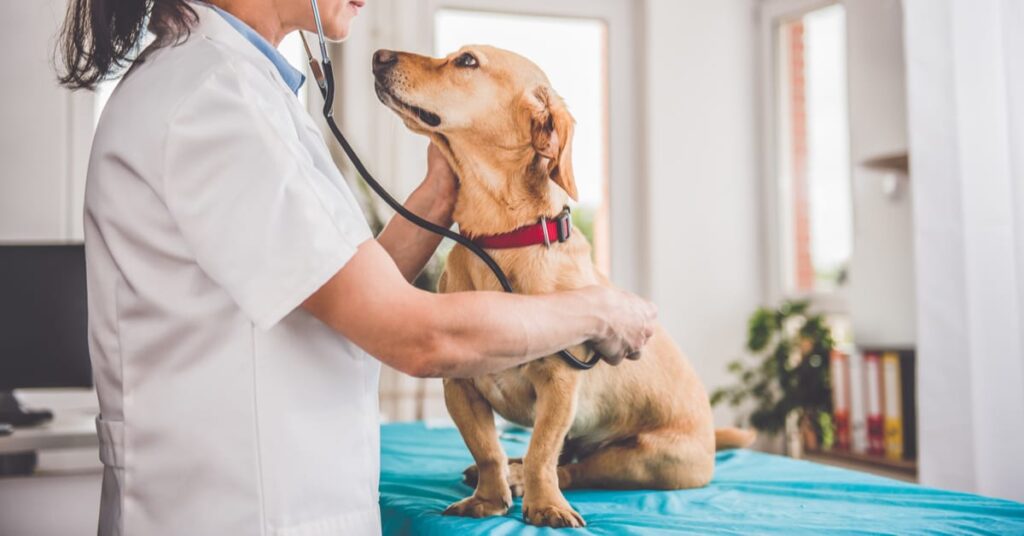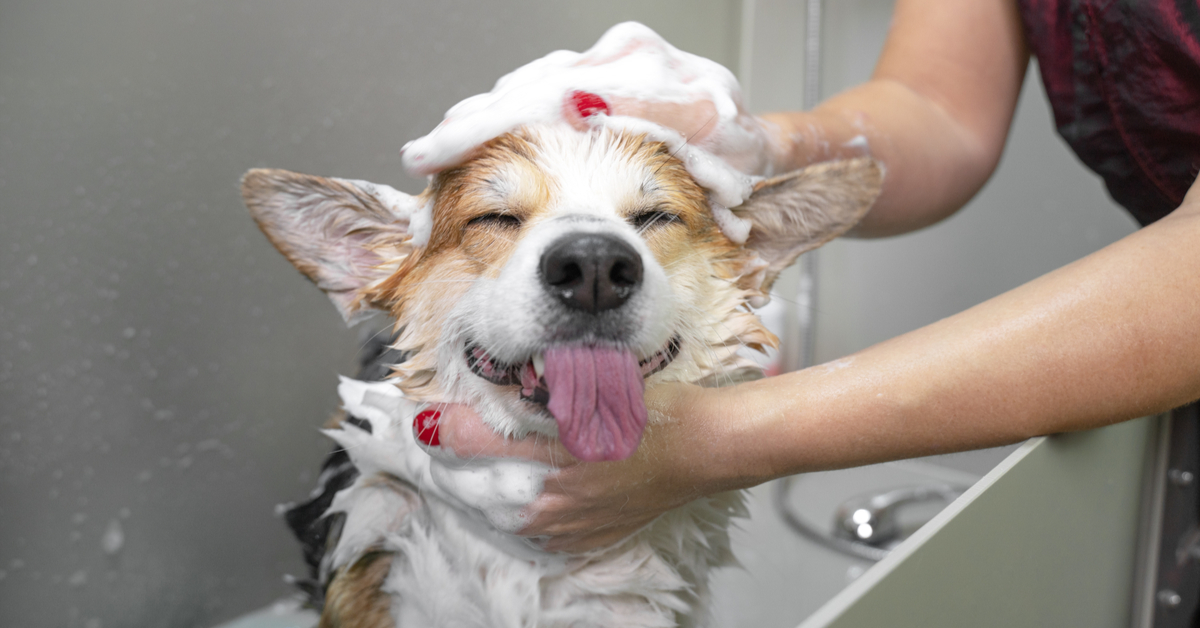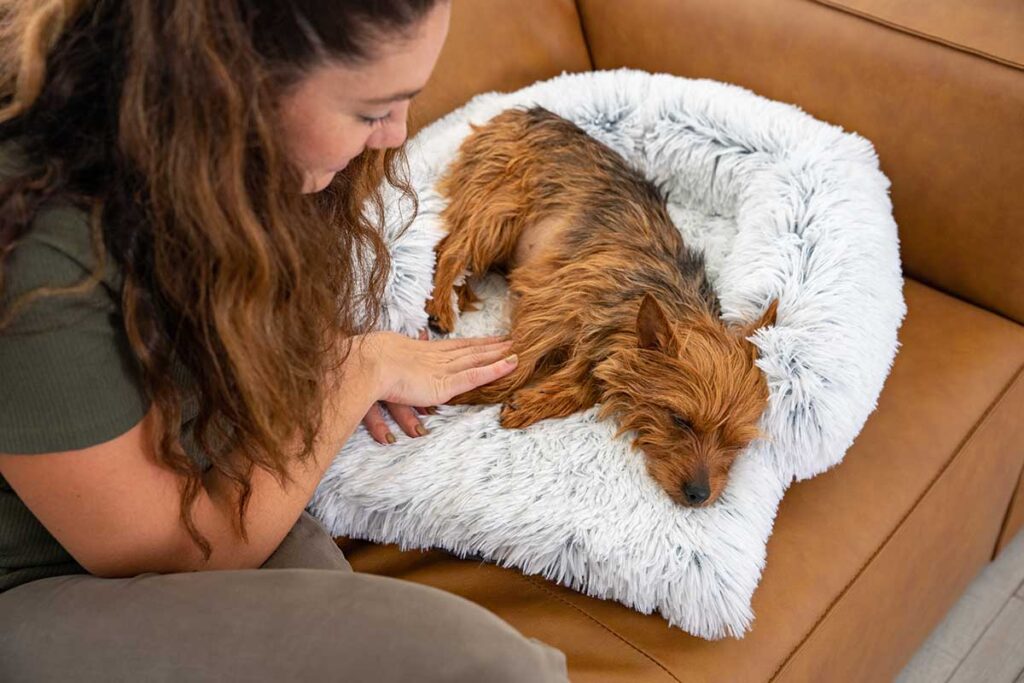Ah, fall is in the air, and along with that air comes watery eyes, sneezing, runny nose, and, most commonly of all, skin problems for your best friend! Dog fall allergies can be as big of a problem for your dog as they can be for you.
Dog allergies can manifest in the form of itchy skin, red eyes, hair loss, or even general itchiness. So what’s causing the problem, and what can you do as a loving pet parent to help?
What Allergens Cause Dog Allergies?

Allergens are basically foreign substances that your pooch can inhale, ingest, or just come into contact with, and when he does, it’s possible for his immune system to overreact.
While the fall season is not associated as much as spring with allergic reactions, there are still several plants, like ragweed and sagebrush, that release pollen in the fall. Fall winds can then spread those substances far and wide.
Mold is also a culprit in fall allergies because increased rain and piles of decaying leaves are great environments for growing mold. Additionally, your good buddy may be more exposed to dust mites in the fall season when your heating system turns on and spreads them throughout the house.
Your pup may also show signs of a flea allergy in the fall since they thrive on the increased moisture in the air.
Your dog’s environmental allergies can then result in itchiness, redness, hives, or swelling. He usually responds by licking or chewing on the affected areas, and that can result in secondary skin infections, which then create even more itching. This allergic reaction on your dog’s skin is known as atopic dermatitis or atopy.
It’s a real catch-22, so what should you look for during allergy season?
Signs of Dog Fall Allergies

Signs of allergies in your dog include:
- sneezing
- watery eyes
- runny nose
- skin rashes
- hair loss
- waxy ear discharge
- red paws
- odor
- excessive scratching
Just like with humans, your dog may suffer from sneezing, watery eyes, and a runny nose. But you might also see him develop rashes and generally irritated skin.
He might also experience hair loss, a waxy discharge from his ears, and red, discolored, smelly feet. Flea allergies can also cause secondary ear infections and other problems like an aural hematoma.
Aural hematomas occur when your dog shakes his head because of an irritated ear. He can shake it so vigorously that the skin of the ear separates from the underlying cartilage. That creates a space where blood can pool. That’s an aural hematoma.
How Can You Be Sure It’s Seasonal Allergies?

While environmental allergies are common in dogs, other problems can cause similar symptoms. It’s vital to determine the cause of your dog’s itchy skin, ear infections, or other symptoms in order to choose the best treatment.
While runny eyes might be due to seasonal allergies, it could also be an eye infection or injury that causes that. Other types of problems include things like dog food allergies and allergic skin lesions resulting from a bacterial infection, among others.
Respiratory symptoms could be seasonal allergies, but it could also be something like kennel cough.
Though environmental allergies are common, there are many other health conditions that cause similar symptoms. It’s important to know which one is causing your dog’s itchy skin or ear infections.
That’s why you’ll want to consult a veterinarian when you notice allergy symptoms in your pooch. They can perform diagnostic tests to determine the exact cause. Since those symptoms can be very uncomfortable and result in more problems, the sooner you visit your DVM, the better.
How Seasonal Allergies Are Diagnosed
There are a number of diagnostic tests your veterinarian might perform, but they usually start with a general physical exam. Your vet will ask about possible allergen exposure, and then they may follow up with some simple skin tests.
For example, they might do a skin scraping and look at the material microscopically to see if there are any skin mites or other identifiable causes. If your pup’s symptoms involve problems with his ears, they will look for evidence of an ear infection.
If your vet thinks that the symptoms are due to something else, they may recommend other types of diagnostic tests. If they suspect food allergies, they may also conduct a food trial, which often involves stopping all foods your dog is eating and instead feeding something hypoallergenic like lamb and rice. Then you reintroduce his old food slowly until the symptoms reappear. That will allow them to identify the specific allergen.
If allergies are determined to be the cause, and your dog has a particularly severe case, they might also recommend allergy testing to determine the specific sensitivity. Once they know the environmental allergens are causing your pup’s symptoms, they can recommend an appropriate treatment.
How are Seasonal Allergies Treated?

You can’t cure allergies, but you can manage the symptoms so that your pooch stays comfortable. There are some over-the-counter medications, like antihistamines (think Benadryl, for example), that can manage those fall allergy symptoms.
Of course, you want to be careful about giving any over-the-counter drugs until you’ve spoken with your vet. Just because you can take a drug like that doesn’t mean it’s safe for your pet.
Your veterinarian might also recommend using a medicated shampoo to help relieve skin irritation or itchiness. For many dogs, those kinds of treatments will be enough to relieve the symptoms, and if fall allergies are to blame, you shouldn’t have to use them year-round.
Dogs with more severe symptoms, however, might need something stronger. In these cases, your dog might need something like a steroidal medication to lessen the strong reaction your dog’s body is having to the allergen.
There are also allergy shots available to help desensitize your pup to the allergen. For these, it will be important to conduct skin testing to determine the specific cause of the reaction.
Of course, it’s also important to treat your pup for any secondary skin or ear infections that develop as a result of the symptoms.
What You Can Do at Home

There are a couple of things you can do at home to help prevent allergic reactions or at least lessen the severity of the reaction. You can wipe your dog’s paws and belly off with a clean, wet cloth after you’ve been on a walk, for example.
It’s also a good idea to bathe your dog once a week. Use a gentle dog shampoo, and pay special attention to areas that might come into contact with plants shedding pollen.
Wash your dog’s bed and any linens he comes into contact with regularly so you can limit his exposure to dust mites. Feeding high-quality dog food and getting him checked regularly for parasites are also important for reducing allergy symptoms.
Final Thoughts on Dog Fall Allergies
While it might be a lovely time of the year, fall can also bring different allergy symptoms that can make you and your pooch really uncomfortable. Take the steps you can to keep your home free of allergens, and see your vet if symptoms develop. You’ll feel as relieved as your pooch when the itching stops!

